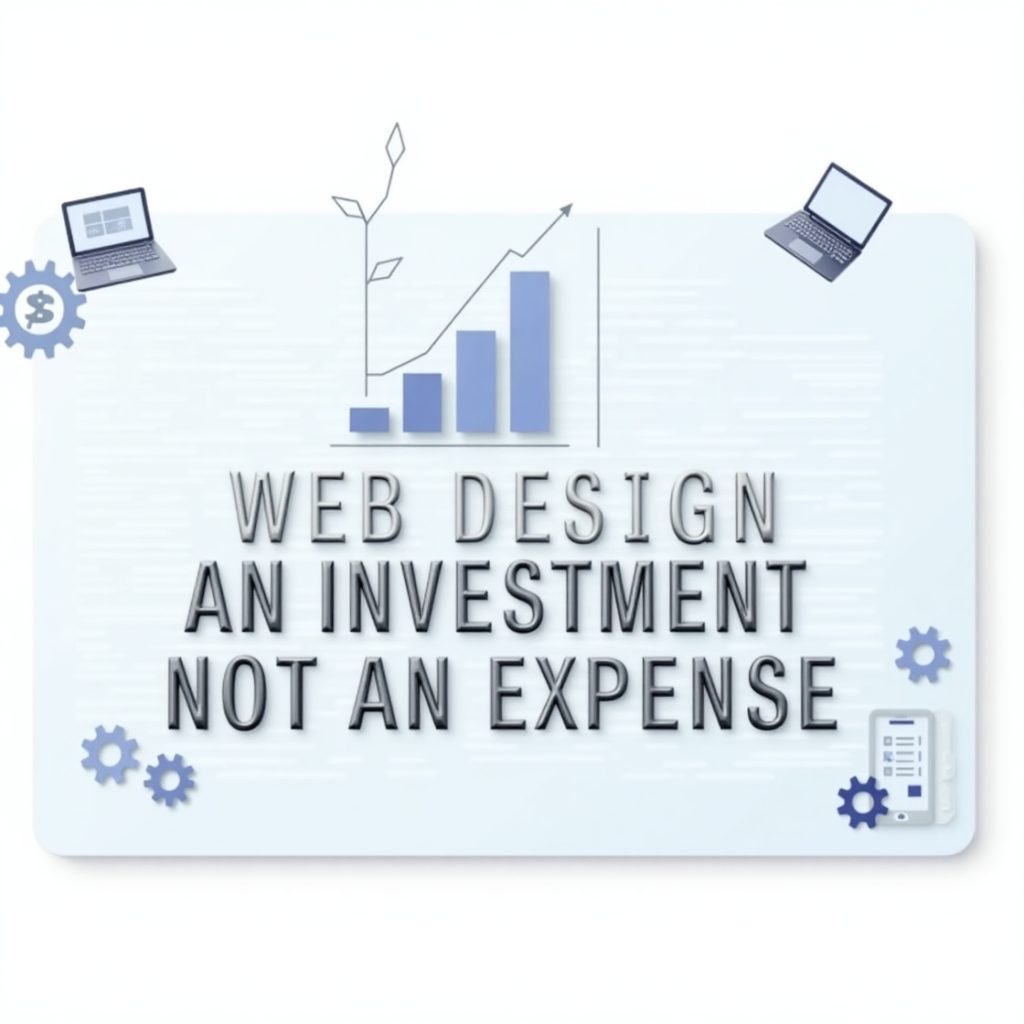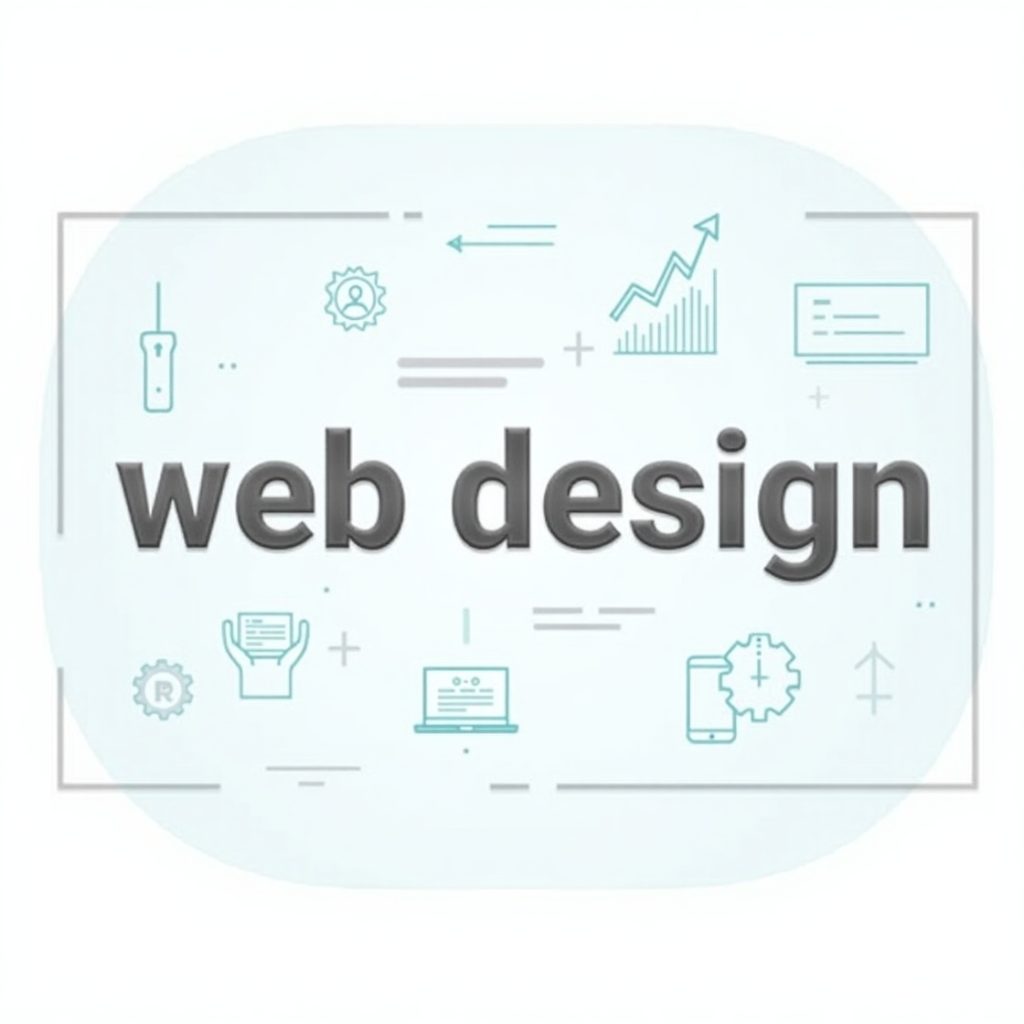
Why Perceiving Web Design as an Investment Matters
As a small business owner, web design is often considered to be just another expense or an evil necessity. But let’s view it from a different angle for a bit. Your website becomes your digital storefront. Would you cut corners on the sight of your physical shop? Probably Not. Your website does just that, but for a global audience 24/7.
When approached strategically, web design becomes a powerful investment that can generate real returns. A well-designed site builds trust, attracts new customers, and strengthens brand identity. It’s often the first touchpoint someone has with your business. If it’s slow, outdated, or hard to navigate, potential clients might bounce before even giving your product or service a chance.
On the contrary, a modern, speedy, and intuitive website can assure you a place among a crowded audience. Boost your SEO, improve conversion rates and give credibility to your marketing campaigns. In other words, it’s not only about looking good, but about performing well.
This article takes you through the other cost affecting your balance sheet: the investment made in business growth, reputation, and long-term success.
Web Design and Your Brand Identity
Well-designed websites create an impression; therefore, they are an introduction to your company, its style, and what it stands for. Think of the website as the visual voice of your brand-what it says, how it says it, and whether people will remember it.
A huge component of creating this identity is web design. Everything from color choice to fonts, layout, and images relay some sort of messaging. Is your brand playful and creative? Or is it professional and minimal? Either way, your website has to reflect it all.
When design is congruent with brand personality, it builds rapport by creating emotional connections. Visitors begin to trust you, become invested in what you are offering, and will likely return. On the contrary, designs that are inconsistent confuse potential clients and can even drive them away.
Great Web Design affects perception-it shows you are attentive to details, which leads us to believe you are likely attentive to your product or service too. Investing in custom web design (the kind agencies like In short, Web design is not only art; it is a functioning part of your business voice and credibility.
How Strategic Web Design Supports Business Goals
Don’t get me wrong, when a website is designed, a lot of focus goes into skin-deep considerations. However, true power lies in how a website manages to help you achieve your goals. Selling more, getting better leads, or getting more bookings-your web design should reflect the business objective behind it.
User experience (UX) is an example. A site with intuitive navigation, quick loading times, and mobile responsiveness will instinctively guide users towards taking action. If your priority is conversion, your design will focus on CTAs, easy forms, and positive visual reinforcement.
Your website is also the nucleus of your digital marketing. It is where SEO, pay-per-click advertising, and social media drive announcements. Visitors land on a confusing and chunky page, and boom- you have lost your marketing dollars. A well-planned website helps engage visitors further in the funnel.
It’s all about strategy, making every aspect of your website from style to content work. Measurement should be a part of it. Are users clicking on your CTAs? Are they finding the information they are looking for?
When web design becomes aligned with your business strategy, it truly becomes a resource that turns in real, measurable results.
Conversion-Driven Design Tactics

First and foremost, what is all about clarity? The prospects should know exactly what the site offers and what action they should take within the first few seconds. This is now the arena of layout and messaging.
Secondly, simplify the journey minimalistically. Cut down all unnecessary activities. Keep menus clean. Use white space as a spotlight onto things that matter. A simplified design invites users to linger and interact.
Next, think mobile first. More users are browsing on smartphones these days, and your site should look and perform well on any screen size. Responsive design is not a choice anymore.
Trust indicators should be there too. Include some testimonials, reviews, case studies, and certifications. Those build trust and can heavily sway buying decisions.
Last but not least, make your CTAs pop. Use contrasting colors and powerful verbs, and keep them above the fold whenever possible.
Conversion design is the oil that makes sure that after the correct application, the wheels of your lead and sale machine are turning; therefore, once in the right hands, conversion design does more than simply beautify your website.
The ROI of a Well-Designed Website
Still not sure if web design is worth the investment? Let’s talk numbers.
A well-optimized website can significantly boost your business’s bottom line. For instance, faster loading pages alone can increase conversions by up to 7% per second improved. And according to a Stanford study, 75% of users judge a business’s credibility based on its website design.
Better design also improves search engine rankings. Search engines favor sites that load quickly, are mobile-friendly, and have clean, well-structured layouts. More visibility equals more organic traffic—which is free, consistent, and highly valuable.
Moreover, your site can work 24/7 as a marketing tool. Unlike a salesperson who clocks out, your website continues to bring in traffic, answer questions, and guide customers to the checkout or contact form.
Yes, there’s an upfront cost. But over time, that cost is dwarfed by the value a high-performing site brings in through increased conversions, customer retention, and brand loyalty.
When you view web design through the lens of ROI rather than upfront expense, it’s clear: it’s one of the smartest investments your business can make.
Measuring Success After Your Web Design Investment
The beauty of web design as an investment is that its performance can be tracked. Use tools like Google Analytics, Hotjar, or HubSpot to monitor metrics like bounce rate, time on page, and conversion paths. These insights tell you what’s working and what needs adjusting.
Look beyond surface-level data. Are more visitors signing up for your newsletter? Are calls and sales increasing? Are users finding your contact page with ease? These are signs that your investment is paying off.
You should also ask for feedback. Send surveys to users or clients asking about their experience on the site. Real user input can provide clarity that data alone may miss. The most successful businesses treat their websites as living tools—always evolving based on goals and performance.